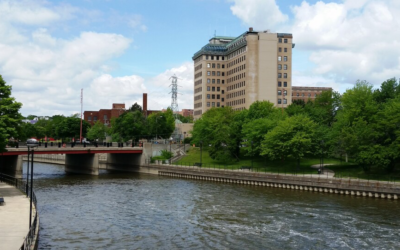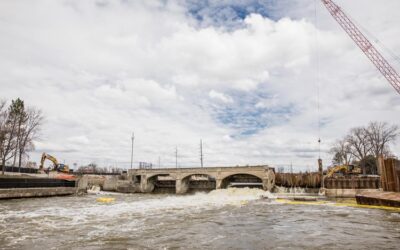More Info & Question
Hamilton Dam & Fabri Dam

Constructed in 1920, Hamilton Dam has a long history of service to the city of Flint. The dam facilitated milling operations for the region’s logging industry and served as a water source for local industries. Throughout its life, the dam helped regulate the flow of water in the Flint River. In the 1960’s, the dam served as the upstream anchor point for a U.S. Army Corps of Engineers’ Flood Control Project. Over time, the dam devolved into a community hazard. It was classified as a High Hazard Critical Dam by the Michigan Department of Natural Resources and Environment (MDNRE). Numerous studies were completed to evaluate the dam’s structural integrity. The results of the studies were consistent, found the dam to be in poor condition, and identified substantial structural deficiencies for both the dam and its gates. The dam is recognized as the current upstream obstacle to walleye spawning and is a limiting factor in the MDNRE’s Saginaw Bay Walleye Restoration Plan, which is the MDNR blueprint for walleye population recovery in the Saginaw Bay. Ultimately, the MDNRE mandated that the Hamilton Dam be replaced.
Fabri Dam was built downstream of Hamilton Dam in 1979. Fabri Dam was an inflatable dam, designed for visual and recreational enhancement of the downtown area, associated with the Riverbank Park improvements. It offered virtually no storage capacity. Additionally, Fabri Dam also impeded fish passage and recreational navigability.
The Flint Riverfront Restoration Plan recommends restoring the Flint River by replacing both Hamilton Dam and Fabri Dam with a new in-river structure that will greatly improve access to and from the Flint River, fish and aquatic habitat, hydrology, connectivity, material recruitment and movement, geomorphology and the water quality of the Flint River.












